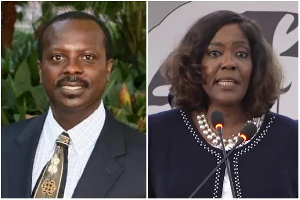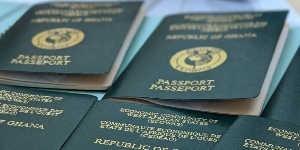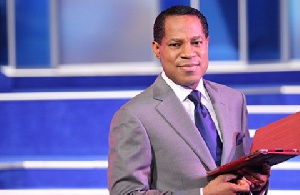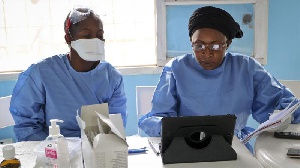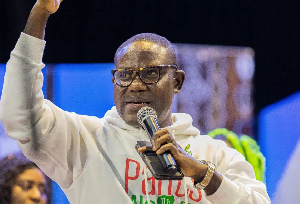The Ghana Education Service (GES) has just released 10,348 newly trained teachers from forty public and six private colleges of education to the regions for onward posting to the schools.
The fact is that good-quality education service delivery also hinges on teacher availability, teacher presence and the teacher’s time on task. But there still is the need for effective stakeholder support with the GES in order to reach out to our children and youth in the schools.
How are the schools in terms of teacher availability?
To give quality pre-tertiary education which develops in young people the relevant knowledge, skills and attitudes for laying the foundations for further education and sustainable livelihood, as being professed by EdQual (2010), there should be an equitable distribution of teachers across the country to include schools in deprived and underserved communities.
The GES, therefore, takes a critical look at this and other factors in the posting of its teachers and staff.
A cursory look at the 2014/2015 report of MoE’s Education Management Information System (EMIS), for example, suggests that teacher deficit is an issue of concern with efforts being made to tackle it fully.
The focus of this article, however, is on how the situation is being managed regarding the posting of qualified teachers to basic schools (not senior high schools) in this year.
The 2014/2015 EMIS Report said that there are 37,147 public school teachers (with 3,712male trained teachers and 19,222 females; 2,352 untrained males and 11,861 untrained females) serving 13,828 kindergartens in the country. There were 96,715 teachers (38,845 trained males and 33,707 females; 18,238 untrained males and 5,925 females) in 14,405 primary schools as 67,841 trained teachers (47,246 males and 20,595 females) out of a total of 77,239 teachers lived in 9,445 junior high schools. But as to whether or not all the teachers actually were in the schools and doing the right things is what this article lacks the strength to discuss.
As a spokesperson of the education agency, the writer does visit some of the schools to appreciate how the process of education service delivery has been happening. Take away the call for some logistical support, a common request which welcomes any officer visiting a school is that, “We need Maths and science teachers. We don’t have this and that teacher. Help us!”
Is there any hope for the schools at all?
We cannot be pessimistic, as a people, about our education. All of us must support the system to thrive. Whether or not there is hope for our schools is a matter for all of us to face together.
Are the schools for the President alone or for the Education Minister or for the GES Director-General (DG) alone? Certainly not! And the last time that I spoke at a school’s anniversary celebrations somewhere in Volta Region, I mentioned, “One Class, One Item”.
If we accept that all children are for us and are for the nation and that their education is valuable to us then how difficult is it to support the children with resources, including having to supply and to motivate their teachers to teach them well? Anyway, this can also be another issue for us to discuss later.
Acting GES DG Professor Kwasi Opoku-Amankwa, in a press briefing in Accra on Tuesday, October 24, 2017, thanked the Government, the Ministry of Finance and MoE for having supported the Service to post to the regions all the 10,939 qualified teachers from the forty-six public and six private colleges of education, including Akim-Oda Methodist College of Education, Jackson College, Agona SDA College, Christ the Teacher College, McCoy College and Holy Spirit College at Ho. He urged the teachers to accept their postings with his admonition to them stemming from what the Handbook for GES Management Staff on Leadership for Change (2014, page 116) also says, “One of the things our teachers need to know clearly is that, they are to serve in any school or station where their services are most needed.”
The new teachers and their stations
The acting DG says all the 10,348 new diploma-holding teachers (comprising 6,001 males and 4,347 females)should report to their designated schools and stations by December 1, 2017. Of the number, 6,249 personnel (representing 60.4%) were sponsored by some districts with 4,099 of them not having any district sponsorship at all.
There were 459 personnel (361 females and 98 males) specializing in Early Childhood Education, 74 (with 41 males and 33 females) in French and 837 in Mathematics and Science, where there were 653 males and 184 females.
Others included; 8,382 personnel for General programmes (including Social Studies, Religious and Moral Education and ICT), 9 persons (5 males and 4 females) for Physical Education and 587 for Technical (494 males and 93 females).
On regional allocations, Ashanti had 1,443 personnel (with 747 females and 696 males), Brong Ahafo, 992 (with 672 males and 320 females); Central, 861 (474 males and 387 females) and Eastern, 1,425 (758 males and 667 females).
Others were 191 (118 females and 73 males) for Greater Accra; 1,169 (768 males and 401 females) for Northern; 1,242 (806 males and 436 females) for Upper East; 972 (560 males and 412 females) for Upper West as Volta and Western regions respectively took delivery of 1,092 personnel (712 males and 380 females) and 961 personnel (482 males and 479 females).
The allocations were largely done on the basis of vacancies declared by the regions as against the number of qualified personnel available.
As we await other personnel to be posted under an ongoing “limited recruitment” exercise, the appeal would be that we all pull together our widow’s mites to motivate teachers, including the new teachers that are being sent to our localities, to stay and to work for our common good.
Opinions of Tuesday, 31 October 2017
Columnist: Anthony Kwaku Amoah



